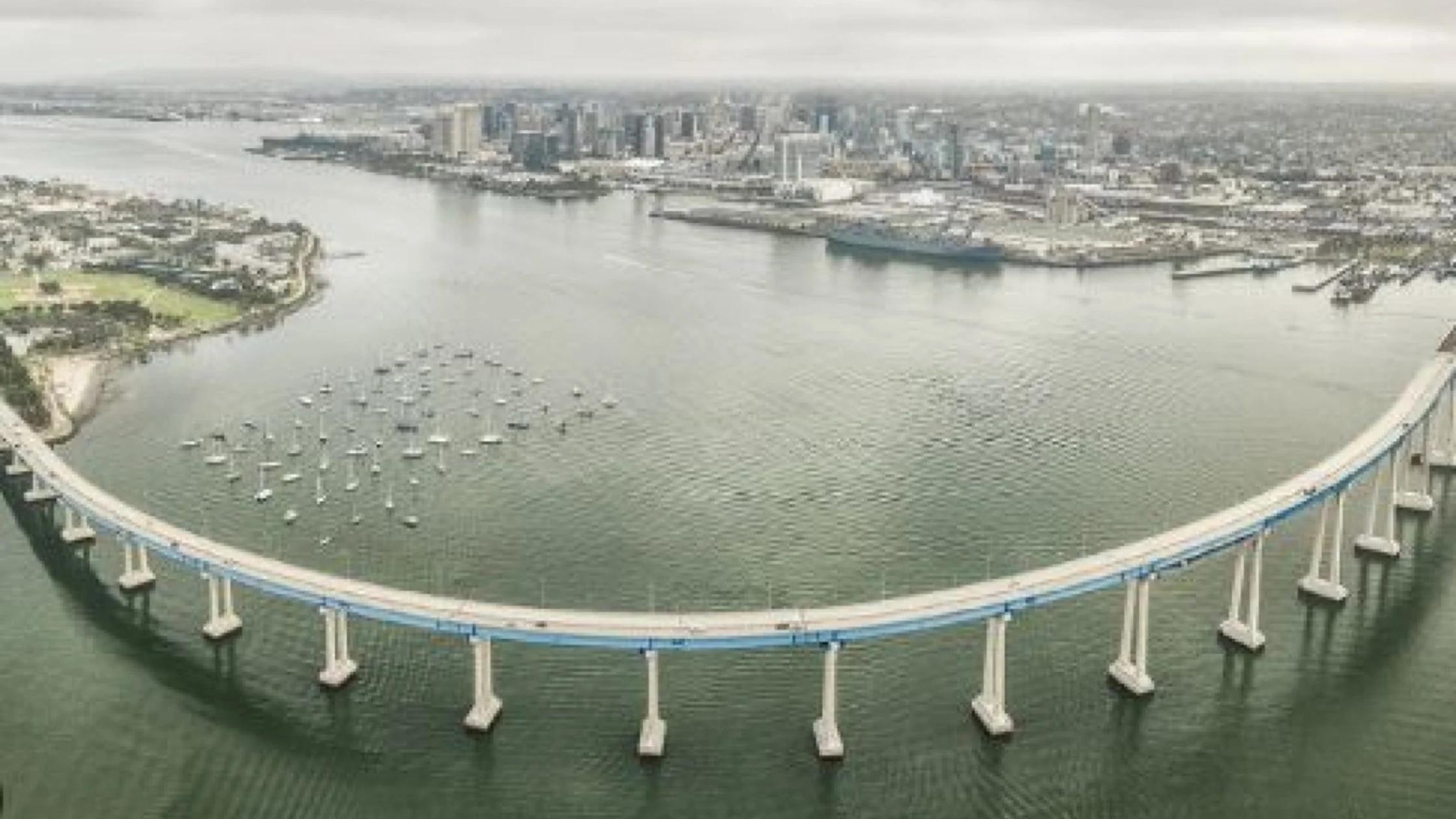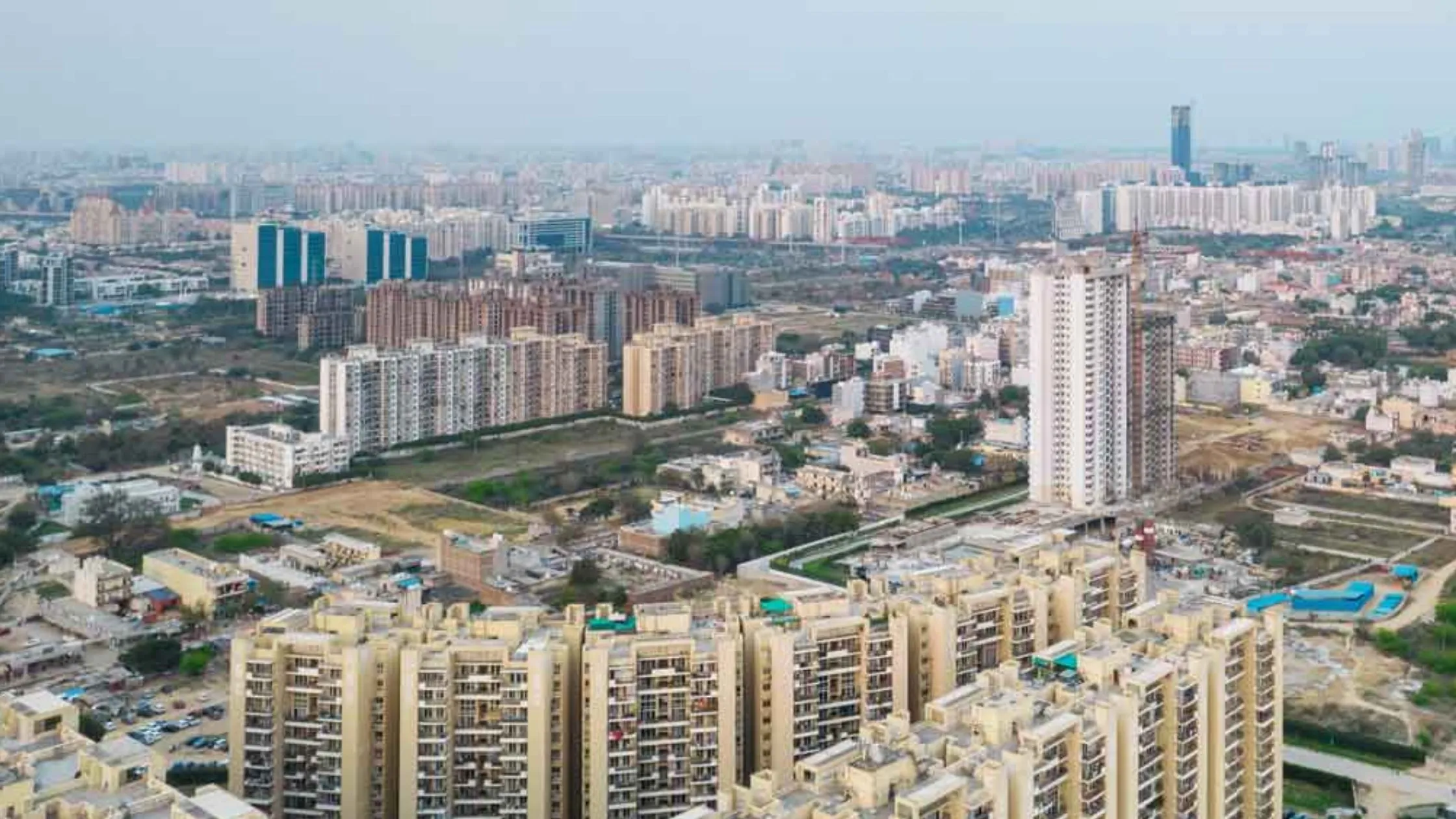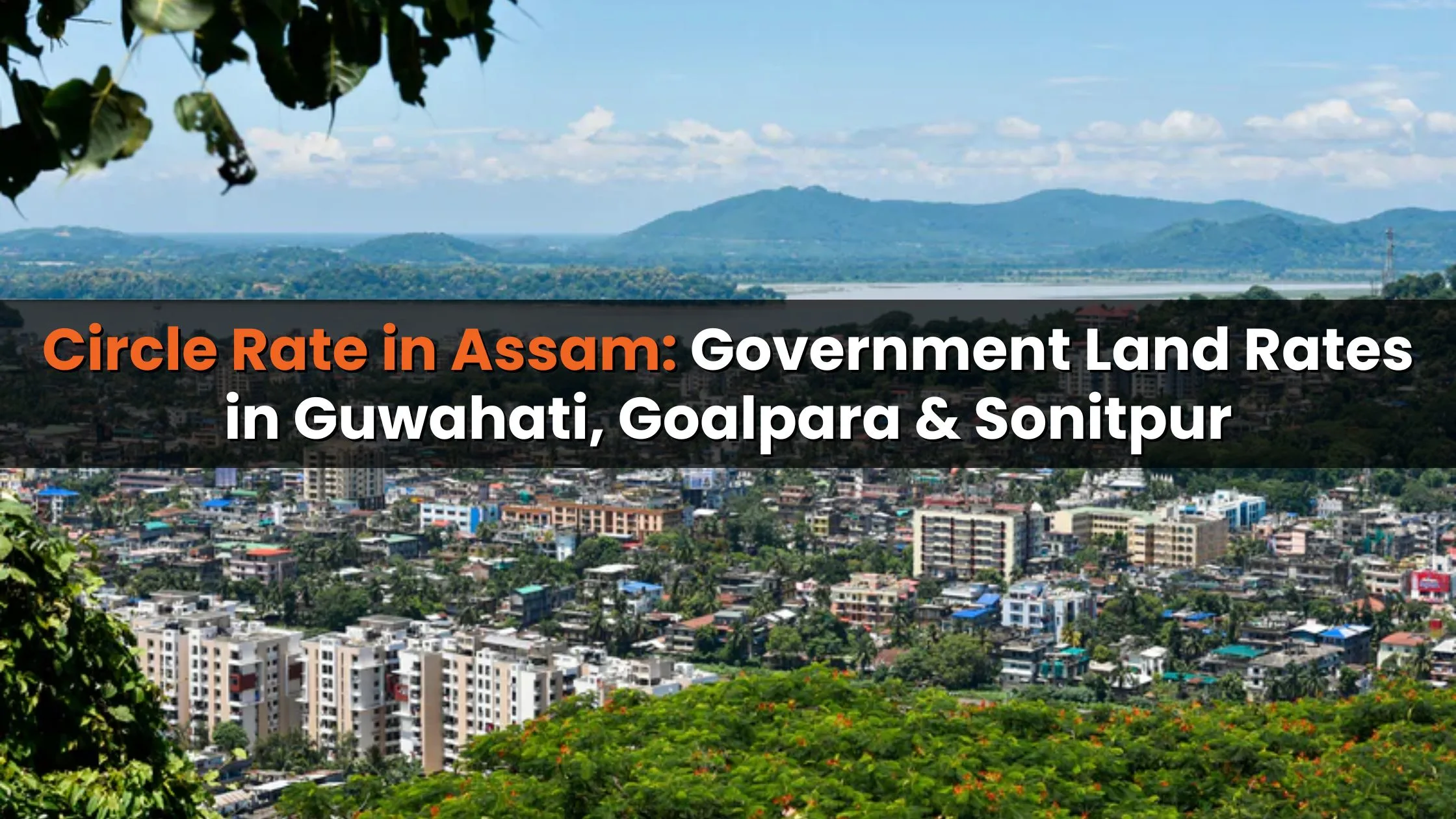Table of Content
- Delhi Dehradun Expressway: Latest Update
- Delhi Dehradun Expressway: Key Facts
- Delhi Dehradun Expressway Overview
- Delhi Dehradun Expressway: Distance and Travel Time
- Delhi Dehradun Expressway: Phases or Route Map
- Phase 1: From Delhi to Uttar Pradesh
- Phase 2: From Baghpat to Saharanpur
- Phase 3: From Saharanpur to Ganeshpur
- Phase 4: From Ganeshpur to Dehradun
- List of Villages Along the Delhi Dehradun Expressway
- The Delhi Dehradun Expressway features several entry and exit points
- Delhi Dehradun Expressway: Timeline and Challenges
- Delhi Dehradun Expressway: Wildlife Corridor
- In what ways will the Delhi Dehradun Expressway promote economic development?
The Delhi-Dehradun Expressway is a major project by the National Highways Authority of India (NHAI) that’s set to connect three states—Uttarakhand, Delhi, and Uttar Pradesh—across 210 kilometers (about 130 miles). Initially planned as a six-lane highway, it will have the option to expand to eight lanes in the future if traffic demand increases.
Right now, the drive from Delhi to Dehradun takes around five hours, but once this expressway is ready, that time will be slashed to just 2.5 hours! The whole project, which is expected to cost INR 13,000 crore, is slated for completion by January 2025. Once it opens, it’s expected to handle around 20,000 to 30,000 vehicles a day, making travel between these cities faster and more convenient than ever before.
Delhi Dehradun Expressway: Latest Update
Delhi Dehradun Expressway: On 22 July 2024, the opening of the Aksardham tie-in to the Eastern Peripheral Expressway would mark the first phase. It would no doubt be a reference point in the history of the daily relief of commuters from traffic." This access route also passes through predefined areas in Delhi such as Geeta Colony, Shastri Park, and Sonia Vihar in Delhi, along with Vijay Vihar, Kasim Vihar, and Mandola in Uttar Pradesh.
Over 19 of the 32 kilometers linking Delhi and EPE will be raised. Vehicles traveling through the elevated area will utilize the access-restricted section. Traffic in the area will be encouraged on a six-lane service road. NHAI has enhanced the whole stretch, which will facilitate vehicle movement on the service roads for the significant advantage of local travelers.
Delhi Dehradun Expressway: Key Facts
Here are some key facts about the Delhi Dehradun Expressway:
|
S. no |
Particulars |
Details |
|
1. |
Expressway connecting cities |
Delhi, Baghpat, Muzaffarnagar, Shamli, Saharanpur |
|
2. |
Length of the expressway |
210 km |
|
3. |
Lanes |
Phase 1 ( 6 lanes) and Phase 2, 3 and 4 ( 12 lanes) |
|
4. |
Estimated cost of the project |
Rs 13000 crore |
|
5. |
Owner |
National Highway Authority of India (NHAI) |
|
6. |
Project model |
EPC (Engineering, Procurement and Construction) |
|
7. |
Deadline |
January 2025 |
Also Read: All You Need to Know About Mahabhulekh 7/12 Land Records
Delhi Dehradun Expressway Overview
The Delhi Dehradun Expressway is a significant infrastructure project being built by NHAI. Covering a total of 210 kilometers, it will connect Delhi, Uttarakhand, and Uttar Pradesh. The expressway was initially planned to have six lanes, with the possibility of expanding to eight lanes in the future.
At present, the trip from Delhi to Dehradun takes approximately five hours. Once the expressway is finished, this will be cut down to two and a half hours. The estimated cost of the project is approximately INR 13,000 crore, and it is anticipated that the completion will occur in January 2025. Authorities anticipate that the new expressway will accommodate 20,000 to 30,000 vehicles daily once it is operational.
Delhi Dehradun Expressway: Distance and Travel Time
Here’s a quick comparison of the distance and travel time between Delhi and Dehradun:
|
Mode |
Total Distance (in km) |
Total Time |
|
By Road |
249 km |
5 hrs or more |
|
By Flight |
205 km |
50 minutes or more |
With the new expressway, travel time between the two cities will be reduced to only 2.5 hours.
Delhi Dehradun Expressway: Phases or Route Map
 (1).jpg)
The Delhi Dehradun Expressway is divided into four distinct phases. Let’s break down each phase:
Phase 1: From Delhi to Uttar Pradesh
This segment in India begins at Akshardham Temple located in Pandav Nagar and concludes at the Eastern Peripheral Expressway in Baghpat, Uttar Pradesh. The section spans at least 32 kilometers, of which 18 kilometers are elevated. The raised section will go through Shastri Park in Delhi and Mandola in Ghaziabad.
Phase 1 will feature a total of 12 lanes, comprising six lanes for the primary roadway and the rest designated for service roads to improve intra-connectivity. The raised, restricted-access area will enable efficient traffic movement for vehicles going straight, while local traffic will gain from the six-lane service road. This division is anticipated to greatly enhance vehicle traffic and alleviate congestion for local travelers.
Phase 1: Impact on Real Estate
The completion of Phase 1 is anticipated to alleviate traffic jams in North-East Delhi, leading to increased residential real estate prices in areas such as Mayur Vihar and Akshardham. The expanding residential neighborhood of Trans-Delhi Signature City in Ghaziabad will also see improved connectivity, making it an attractive option for homebuyers. The estimated costs for the Akshardham to Loni corridor and the Loni to Baghpat stretch are INR 1,300 crore and INR 1,900 crore, respectively.
Phase 2: From Baghpat to Saharanpur
The stage between Baghpat EPE interchange and Saharanpur Bypass is set to include the anticipated addition of two additional lanes and four additional interchanges. NHAI plans to construct a minimum of 60 underpasses to improve traffic movement. It is also important to mention that convenience amenities like rest stops or hotels will be built every 25 kilometers for the ease of drivers.
Phase 2: Impact on Real Estate
The development of this phase is expected to spur residential growth in areas like Lakshman Puri, Sharda Nagar, and Vasant Vihar, making them attractive for potential homebuyers.
Phase 3: From Saharanpur to Ganeshpur
This stage will link Saharanpur to Ganeshpur, spanning about 40 kilometers with six lanes. It will entail the redevelopment of brownfields and the extension of the current highway system.
Phase 3: Impact on Real Estate
The completion of this phase is likely to stimulate business and residential growth in both Ganeshpur and Saharanpur, making these areas more accessible and desirable for real estate investment.
Also Read: Newly Launched Real Estate Projects in Delhi NCR
Phase 4: From Ganeshpur to Dehradun
The concluding stage will connect Ganeshpur to Dehradun, featuring an elevated route that crosses a picturesque forest area, encompassing the Rajaji Tiger Reserve and the Shivalik Hills. This stage is anticipated to boost tourism and raise interest in holiday homes in Dehradun.
Phase 4: Impact on Real Estate
The expressway's completion will likely boost Dehradun's property market, making weekend trips more feasible and increasing demand for vacation homes.
The Delhi Dehradun Expressway will ensure smooth connectivity to various expressways, such as the Eastern Peripheral Expressway, Ambala-Shamli Expressway, and Saharanpur-Haridwar Expressway, thereby decreasing travel time significantly.
List of Villages Along the Delhi Dehradun Expressway
Below is the list of villages situated along the Delhi Dehradun Expressway.:
|
District |
Village |
|
Baghpat |
|
|
Muzaffarnagar |
|
|
Shmali |
|
|
Saharanpur |
|
Here are several important villages situated along the Delhi Dehradun Expressway. You can find many additional villages included in this list on the official NHAI website.
The Delhi Dehradun Expressway features several entry and exit points
- Entry points from Delhi to Uttar Pradesh: Akshardham, Geeta Colony, Shamshan Ghat (Kailash Nagar), Sonia Vihar, Vijay Vihar, and Mandola.
- Exit points from Delhi to Uttar Pradesh include: Khajuri Chowk, Sonia Vihar, Vijay Vihar, and Mandola.
- Entry point from Uttar Pradesh to Delhi: Mandola, Vijay Vihar, and 5th Pusta
- Exit points from Uttar Pradesh to Delhi include: Mandola, Loni, Vijay Vihar, Usmanpur, Shamshan Ghat (Kailash Nagar), Geeta Colony, and Akshardham.
The Delhi Dehradun Expressway is expected to be completed by January 2025. It will significantly reduce travel time from Delhi to Dehradun, cutting it down from 5.5–6 hours to just 2.5 hours. Similarly, the journey between Delhi and Haridwar will be shortened from 5 hours to only 2 hours.
.jpg)
Delhi Dehradun Expressway: Timeline and Challenges
Here are some of the current updates with regard to the project of Delhi Dehradun Expressway:
February 2020: Project approved by the central government
January 2021: The first two phases, from Akshardham to the Baghpat district boundary, have been completed, with land acquisition and tender allotments finalized.
November 2021: 2095 crores allocated by the central government for six-lane extension from Haridwar to Delhi Dehradun expressway
December 2021: PM laid the foundation stone on the 4th December 2021 for inaugurating the construction work for the expressway
January 2022 : Tenders have been invited for the next phase of construction, spanning the Shamli-Ambala section.
August 2022: The last 20-km stretch will be constructed of the expressway passing over an eco-sensitive zone-Rajaji National Park.
September 2024: Drive up to Delhi Dehradun Expressway will be complete by January 2025 and also open for traffic, while the Roorkee-Haridwar Expressway spur will be complete by May 2025.
A number of NGOs that deal with biodiversity and environmentalists are strongly against the development of this Delhi Dehradun Expressway. They have brought several PILs (public interest litigations) as such initiatives lead to cutting trees and affect wildlife. The court has not yet reached a verdict in the case. The court, however, granted a permission recently for NHAI to go ahead after it put forward a survey report showing the removal of some 25,000 trees.
Delhi Dehradun Expressway: Wildlife Corridor
One of the most identifiable features of the expressway is the 12-km-long elevated wildlife corridor that crosses Rajaji National Park. It is the longest wildlife corridor of its kind in Asia and its construction has been aimed at facilitating wildlife movement.
In what ways will the Delhi Dehradun Expressway promote economic development?
- Expansion of retail sector: Enhanced access to Dehradun is anticipated to draw numerous retailers from Delhi NCR to broaden their presence in Dehradun.
- Industrial development: The new corridor will enhance the expansion of industries, such as manufacturing plants, distribution hubs, factories, and storage facilities, in key areas.
- Effect on tourism and hospitality: Dehradun is a popular travel spot in Uttarakhand. Once the Delhi Dehradun Expressway is completed, it will facilitate convenient access for tourists, positively influencing the tourism industry.
- Enhanced employment prospects: The construction of this expressway will create additional job opportunities for individuals in different sectors, such as hospitality.
___
The Delhi Dehradun Expressway is the main road for the development projects being executed by the Indian government. It will also be a means to transform connectivity and enlarge the growing opportunities for facilitating real estate progress and the local economy. The Expressway is anticipated to be completed in January 2025. Hence, this is the best opportunity for investors and homebuyers. It indeed has all the signs of becoming an important corridor for trade and commerce in India. Property prices, value appreciation and better access will make it the best time for investment in the real estate scenario along this corridor.
Also Read: Exploring the YEIDA Plot Scheme 2024: Key Details You Need




_1767854635.webp)




Ans 1. The Delhi-Dehradun Expressway is a 210-km highway project by NHAI that will connect Delhi, Uttar Pradesh, and Uttarakhand, reducing travel time between Delhi and Dehradun to 2.5 hours.
Ans 2. The expressway is expected to be completed by January 2025, with the Roorkee-Haridwar Expressway spur slated for completion by May 2025.
Ans 3. The expressway will cut travel time between Delhi and Dehradun from 5-6 hours to just 2.5 hours.
Ans 4. The total estimated cost of the project is INR 13,000 crore.
Ans 5. The expressway will initially have six lanes, with provisions to expand to eight lanes based on future traffic demand.
Ans 6. A key feature of the project is a 12-km elevated wildlife corridor through Rajaji National Park, designed to protect wildlife movement and biodiversity.
Ans 7. The expressway is expected to boost real estate growth in areas like Mayur Vihar, Ghaziabad, Saharanpur, and Dehradun, making them attractive for investment and homebuyers.
Ans 8. Key entry points include Akshardham, Geeta Colony, and Sonia Vihar in Delhi, while exit points include Mandola, Loni, and Khajuri Chowk.
Ans 9. Environmental concerns, including tree cutting and wildlife disruption, have led to PILs filed by NGOs. However, NHAI is addressing these issues with eco-sensitive designs.
Ans 10. The expressway is expected to drive economic growth by enhancing connectivity, boosting tourism, encouraging industrial development, and creating job opportunities in various sectors.